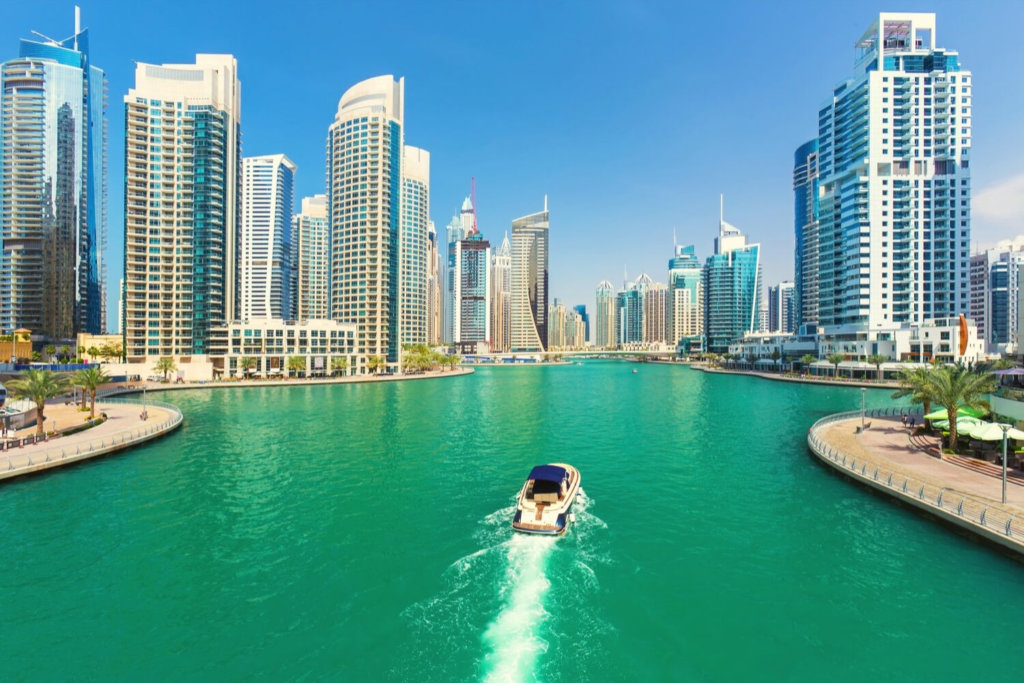Introduction: Experiencing Dubai’s Seasonal Transition
Seasonal Changes in Dubai are remarkable, as the city shifts from scorching summers to mild and pleasant winters. Residents experience intense heat and high humidity during the summer months, while winter brings comfortable temperatures, fresh air, and ideal conditions for outdoor activities. These seasonal shifts shape daily life, influence lifestyle choices, and affect tourism, creating a city that adapts gracefully to the rhythm of nature.
The Heat of Dubai’s Long Summer
Summer in Dubai is defined by its intensity. From late May until early October, temperatures often climb well above 40ºC, with humidity levels adding to the discomfort, especially along the coast. For many, the outdoors becomes challenging during peak hours, and life shifts indoors to the safety of air-conditioned environments. Despite the heat, the city remains alive, with malls, offices, and indoor attractions buzzing with activity. The hot summer also reflects the resilience of the people who adapt to its demands.
Coping Mechanisms During the Summer Months
The residents of Dubai have developed many strategies to cope with the extreme summer heat. Hydration becomes a daily priority, and light, breathable clothing helps people stay comfortable. Work schedules for outdoor laborers are often adjusted, with breaks provided during the hottest hours of the day. Families choose evening strolls over daytime outings, and beachgoers head for early mornings or late afternoons. Cooling technologies, from advanced air conditioning systems to shaded walkways, are part of everyday life, making the summer manageable while still allowing for productivity and leisure.

The Role of Humidity in Summer
While the desert interior of the UAE is dry, Dubai’s location on the Arabian Gulf means summer comes with high humidity. The sticky air makes temperatures feel hotter than they are, and this adds another layer of challenge to the season. At the same time, humidity contributes to a unique weather balance, preventing the climate from being as dry as inland deserts. It also shapes the rhythm of daily life, influencing how people work, travel, and enjoy their time outdoors.
The Shift Towards Autumn
As summer draws to a close, small yet noticeable changes appear. By October, mornings and evenings begin to cool, and residents feel a sense of relief. Outdoor life slowly returns, with families visiting parks, beaches, and open-air restaurants. The arrival of autumn is not marked by falling leaves or dramatic color shifts like in other parts of the world, but by a change in temperature that allows Dubai’s vibrant social life to expand beyond indoor settings.

Mild Winters: A Season of Comfort
Winter in Dubai, from November to March, is the season many look forward to most. Temperatures range between 18ºC and 28ºC, creating a perfect balance of warmth and coolness. The skies remain mostly clear, and rainfall, though rare, adds freshness to the air. These months are ideal for outdoor living, with beaches, parks, and desert adventures becoming the highlights of daily and tourist life. For residents, it is a time of comfort; for visitors, it is one of the most attractive reasons to travel to Dubai.
Lifestyle in the Winter Season
With the arrival of winter, Dubai’s lifestyle transforms. Cafés and restaurants set up outdoor seating, markets and festivals attract large crowds, and cultural events flourish. Families plan picnics, desert safaris, and barbecues. Sports like cycling, running, and golf become popular, with international tournaments often scheduled during these months. Winter also coincides with some of Dubai’s biggest celebrations, including New Year’s Eve, which draws the world’s attention with spectacular fireworks. This season is not just about pleasant weather—it is about the joy of living outdoors.
Tourism During Winter
Dubai’s winter is one of the strongest magnets for global tourism. Visitors escape harsh winters in their home countries and flock to the UAE for sunshine and warmth. Resorts, beaches, and cultural attractions witness record footfalls during these months. Major shopping festivals and international events are also scheduled to align with the winter season, making it the most lucrative time for the tourism and hospitality industry. The contrast between the burning summer and inviting winter is part of what makes Dubai unique on the global travel map.
Impact on Fashion and Clothing
Fashion in Dubai also reflects the seasonal shifts. During summer, light fabrics, pastel shades, and practical accessories like hats and sunglasses dominate wardrobes. In winter, while the temperatures remain mild compared to many parts of the world, residents enjoy the chance to wear light jackets, scarves, and layered outfits. Luxury fashion brands adapt their collections to suit Dubai’s seasonal changes, offering options that balance style with comfort in both heat and cooler months.
Seasonal Food and Dining Trends
Food culture in Dubai also shifts with the weather. In summer, light meals, hydrating fruits, and refreshing drinks dominate dining tables. Residents prefer indoor dining experiences in air-conditioned comfort. As winter sets in, outdoor dining becomes a lifestyle. Barbecues, food festivals, and rooftop restaurants become popular, and international cuisines gain prominence as tourists bring diverse tastes. The winter season’s pleasant evenings create a social atmosphere where food becomes central to community life.
Psychological Effects of Seasonal Change
Weather has a deep impact on how people feel and behave. The intense heat of summer can sometimes lead to fatigue or lethargy, while the arrival of winter brings renewed energy and optimism. Residents often describe winter as a time of happiness, freedom, and inspiration. The ability to engage in outdoor activities, socialize comfortably, and explore the city’s attractions creates a sense of wellbeing that balances out the challenges of the summer months.
Sports and Outdoor Activities Across Seasons
Dubai’s sporting calendar is influenced heavily by the seasons. In summer, indoor sports complexes host activities like swimming, badminton, and indoor football. When winter arrives, outdoor sports thrive. Marathons, cycling events, golf tournaments, and beach volleyball all take center stage. Desert adventures like dune bashing and camel riding are also at their peak, attracting both residents and tourists eager to experience the UAE’s natural landscape under pleasant weather conditions.
Architecture and Seasonal Planning
Dubai’s city planning and architecture are also shaped by seasonal changes. Buildings are designed with cooling systems that can handle extreme heat, while open-air designs make winter living enjoyable. Parks and public spaces are equipped with shaded areas for summer and open lawns for winter picnics. Infrastructure like covered walkways, cooled bus shelters, and advanced ventilation systems reflects the city’s effort to adapt to both extremes of its climate.
Festivals and Cultural Celebrations
Seasonal changes also mark shifts in cultural life. During the cooler months, Dubai hosts global events such as the Dubai Shopping Festival, Art Dubai, and food festivals. National Day celebrations and international concerts are also scheduled during this season, when outdoor gatherings are most enjoyable. In summer, cultural life moves indoors, with theater performances, exhibitions, and indoor family activities dominating the calendar. This seasonal rhythm adds variety to the cultural fabric of the city.
Environmental and Ecological Effects
The shift from hot summer to mild winter also impacts the environment. In summer, the heat and dryness strain local flora and fauna, while winter brings a short period of revival. Parks, gardens, and desert landscapes appear fresher, and migratory birds arrive in the UAE, adding life to wetlands and reserves. Seasonal changes highlight Dubai’s role as both a modern city and a part of a larger natural ecosystem that adapts and transforms throughout the year.

Looking Ahead: Climate Trends in Dubai
As global climate patterns shift, Dubai continues to monitor and adapt to changes in seasonal weather. Predictions suggest that summers could become longer and hotter, while winters may gradually shorten. The city is investing in sustainable solutions such as renewable energy, smart cooling systems, and green spaces to manage these changes. Dubai’s ability to innovate ensures that its residents and visitors will continue to enjoy life, regardless of how seasons evolve in the future.
Conclusion: Embracing the Rhythm of Seasons
The seasonal changes from hot summer to mild winter in Dubai shape not just the climate but the way of life itself. From adapting daily routines during the intense heat to celebrating outdoor living in winter, these shifts bring rhythm and balance to the city. For residents, the seasonal cycle offers both challenges and rewards. For visitors, it provides two distinct experiences of the same destination. In every season, Dubai stands as a symbol of resilience, adaptability, and the beauty of life shaped by nature.
Do follow UAE Stories on Instagram
Read Next – UAE Umrah Pilgrims Pre-booking Rules: What Travelers Must Know














